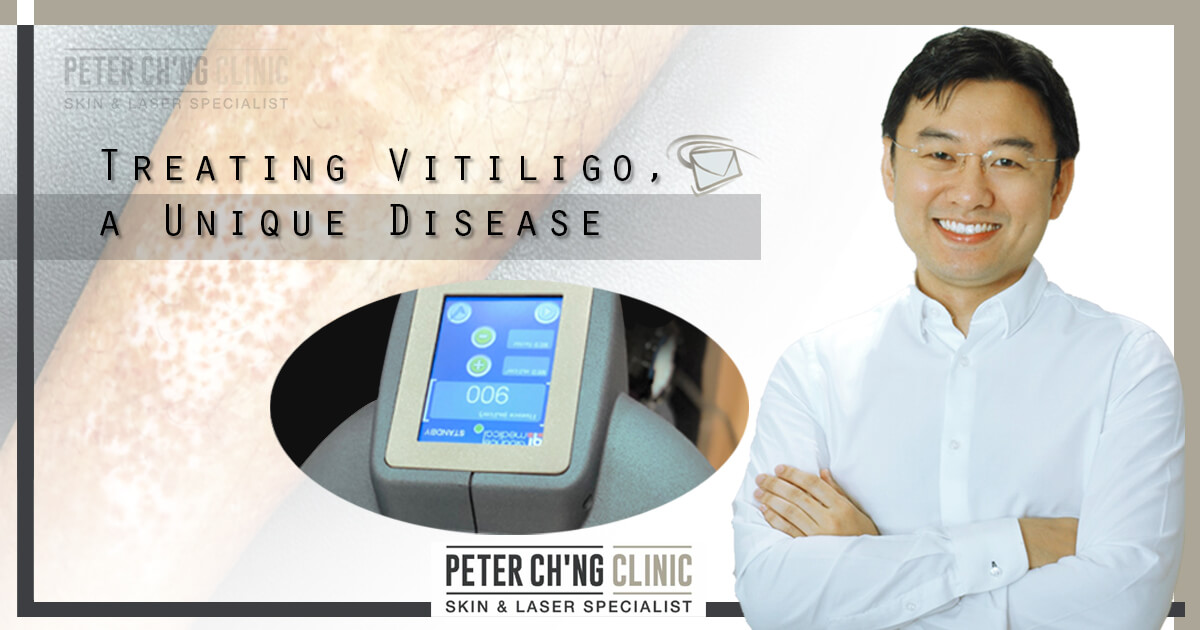5 Myths and Misconceptions About Vitiligo You Misunderstood
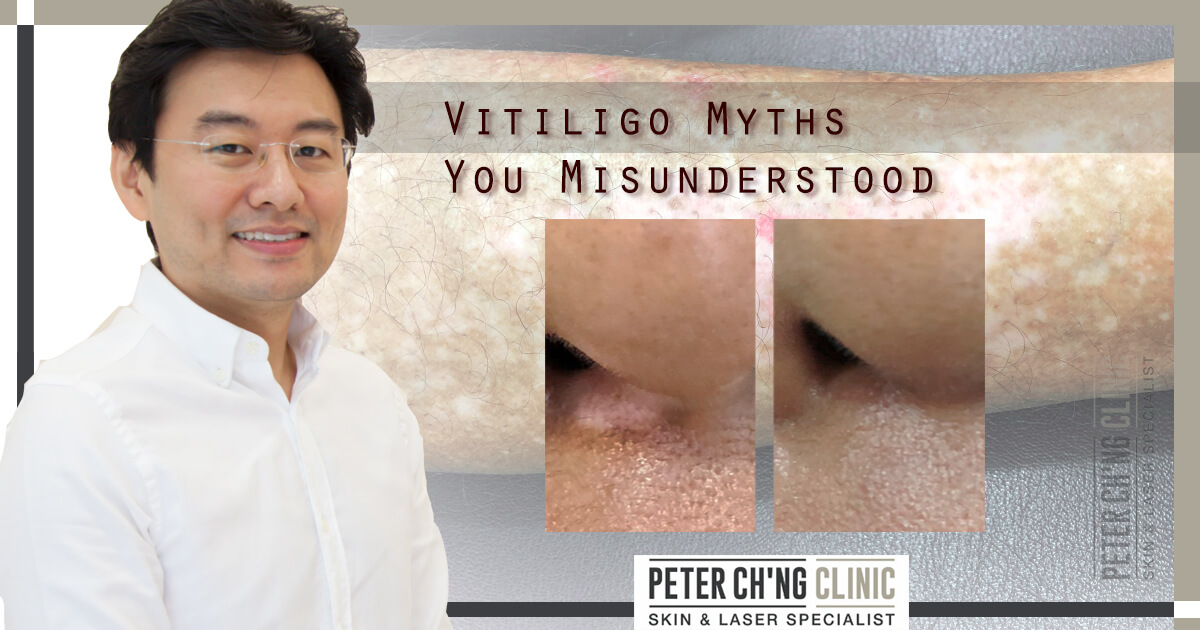
Vitiligo is a unique disease, unlike other skin conditions that cause discolouration on the skin like pigmentation or rashes, vitiligo is actually the result of depigmentation - meaning that there's no pigment at all in the affected area, causing the appearance of white patches.
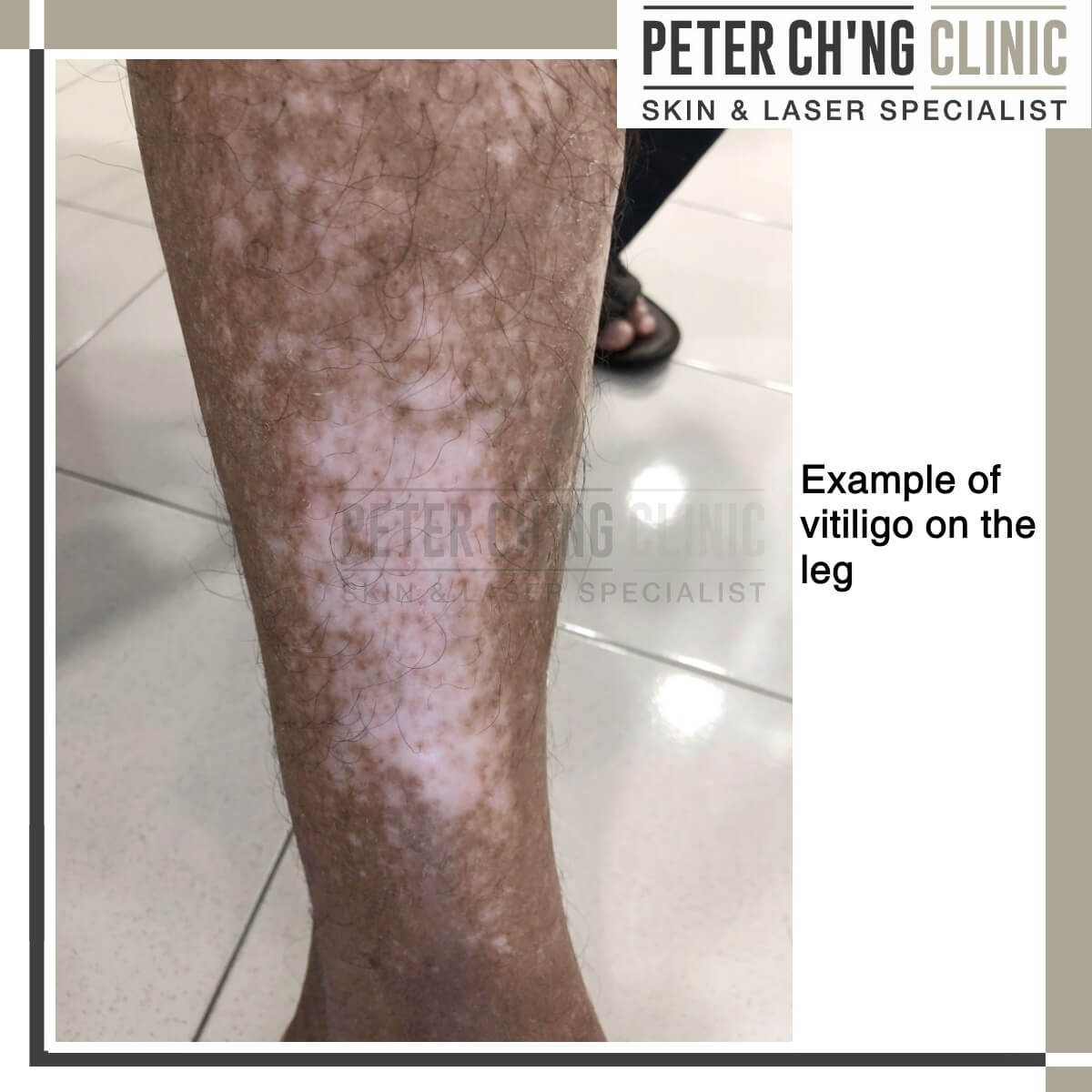
We often get confused about vitiligo due to the fact that it is seldom talked about (although it is actually not an uncommon disorder at all). Just last week, Dr Peter also wrote extensively about vitiligo, answering several questions by patients asking about the cause of these white patches and how we can treat them. You can check it out here: Patient Mailbox: Tired of Covering Myself Up Because of Vitiligo
Due to the uniqueness of vitiligo as a skin disorder, there have been myths and misconceptions about it being talked about. Do you know which is true and which is not?
Myth: Vitiligo is caused by diet

There is actually NO CONNECTION between diet and vitiligo.
Because of the appearance of vitiligo as white patches on the skin, there have been talks about vitiligo being aggravated or caused by the food we eat, especially food that is white in colour, like milk and dairy products.
Some also say that sour or citrus foods can worsen vitiligo, or a combination of drinking milk after eating fish can cause the formation of vitiligo.
There is actually NO CONNECTION between diet and vitiligo. Vitiligo is an autoimmune disease, where our body immune system kills the pigments in areas of our skin. As to why this happens, up until now we know that genetic plays a significant role, as well as some environmental factors.
Myth: Vitiligo is contagious

Vitiligo is NOT CONTAGIOUS.
Some of us are afraid to get into contact with people with vitiligo on their skin, in fear of getting a contagious skin disease.
However, vitiligo cannot be transmitted through touching, sharing of items, saliva, or intercourse. Vitiligo is an autoimmune disease which is largely genetic, so it can't spread from one person to another.
Vitiligo is also not related to skin disorders with similar appearances like albinism, leprosy or skin cancer.
This is a common belief because in the past, leprosy, which also has white patches due to hypopigmentation (not depigmentation like vitiligo) is infectious. So some people regard vitiligo as infectious as well because of their similar appearance.
So if you have a friend with vitiligo, feel free to give him or her a hug!
Myth: Vitiligo is caused by sun damage

Vitiligo is NOT caused by sun damage.
Due to the difference in appearance, especially in colour, of skin area with vitiligo compared to other skin area, some of us might think that a person with white patches on the skin may have suffered sunburn before.
Some also associate vitiligo to skin bleaching, overuse of skin whitening, or skin cancer.
In truth, vitiligo hasn't got a lot to do with the surface of the skin, but rather beneath it, as it is a result of depigmentation due to our body killing the pigments as an autoimmune reaction.
However, vitiligo may be caused by trauma or damage to the skin, known as the Koebner phenomenon. This is when lesions appear at the site of skin trauma, and if the patient scratches the lesion and further traumatize it, there's a chance vitiligo can happen at the site of trauma.
Myth: Vitiligo will disappear on its own
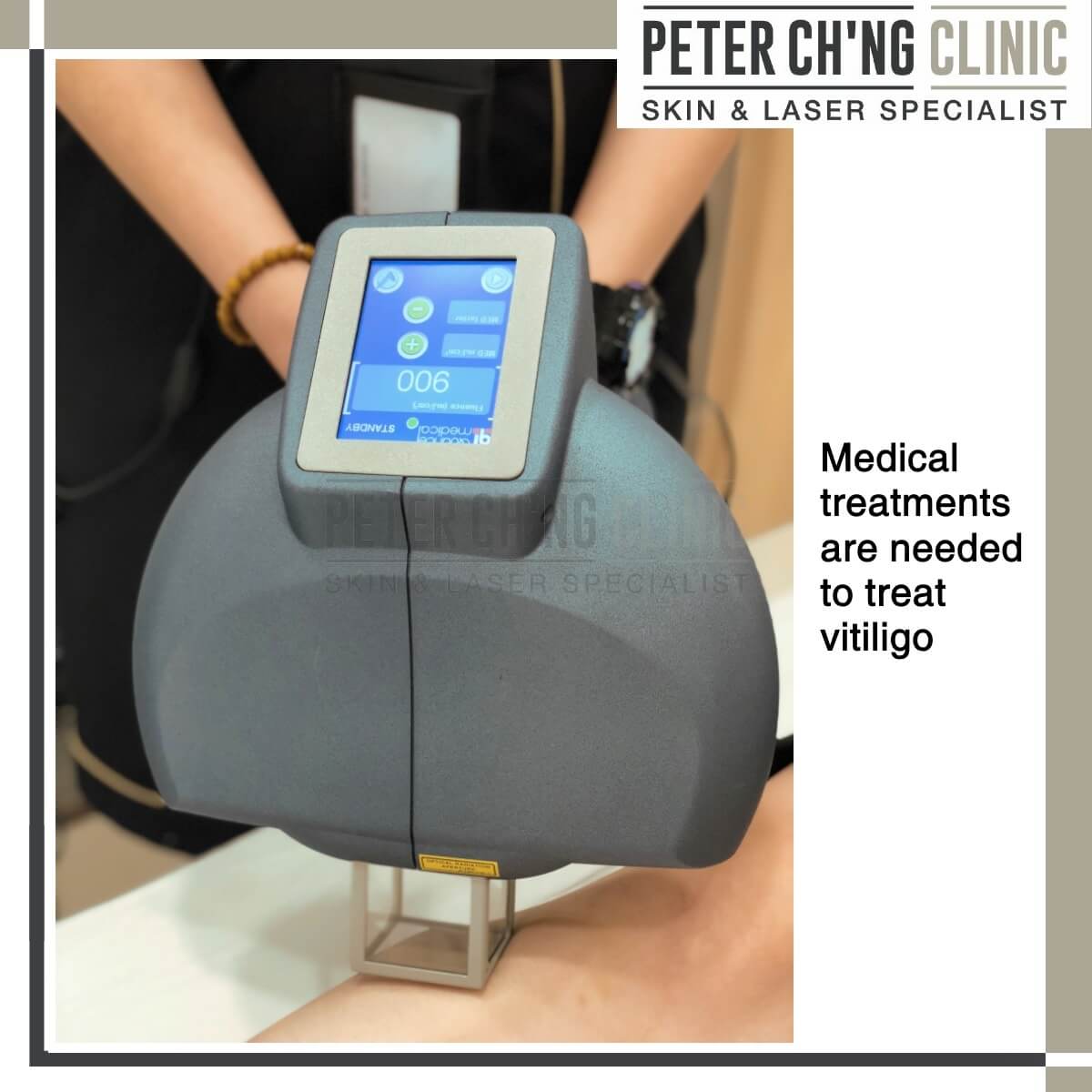
It is usually very UNLIKELY to disappear on its own without any treatment.
While in rare cases vitiligo do sometimes go away by itself, it is usually very UNLIKELY to disappear on its own without any treatment.
In fact, it is very common that the white patches of vitiligo grow larger and spread wider if not treated. Scratching on the site of vitiligo can also cause vitiligo to spread or form lesions around the site of trauma, so the safest option is always to seek medical treatment to control and treat the vitiligo instead of attempting to get rid of it yourself or let it disappear on its own.
Myth: Vitiligo cannot be cured
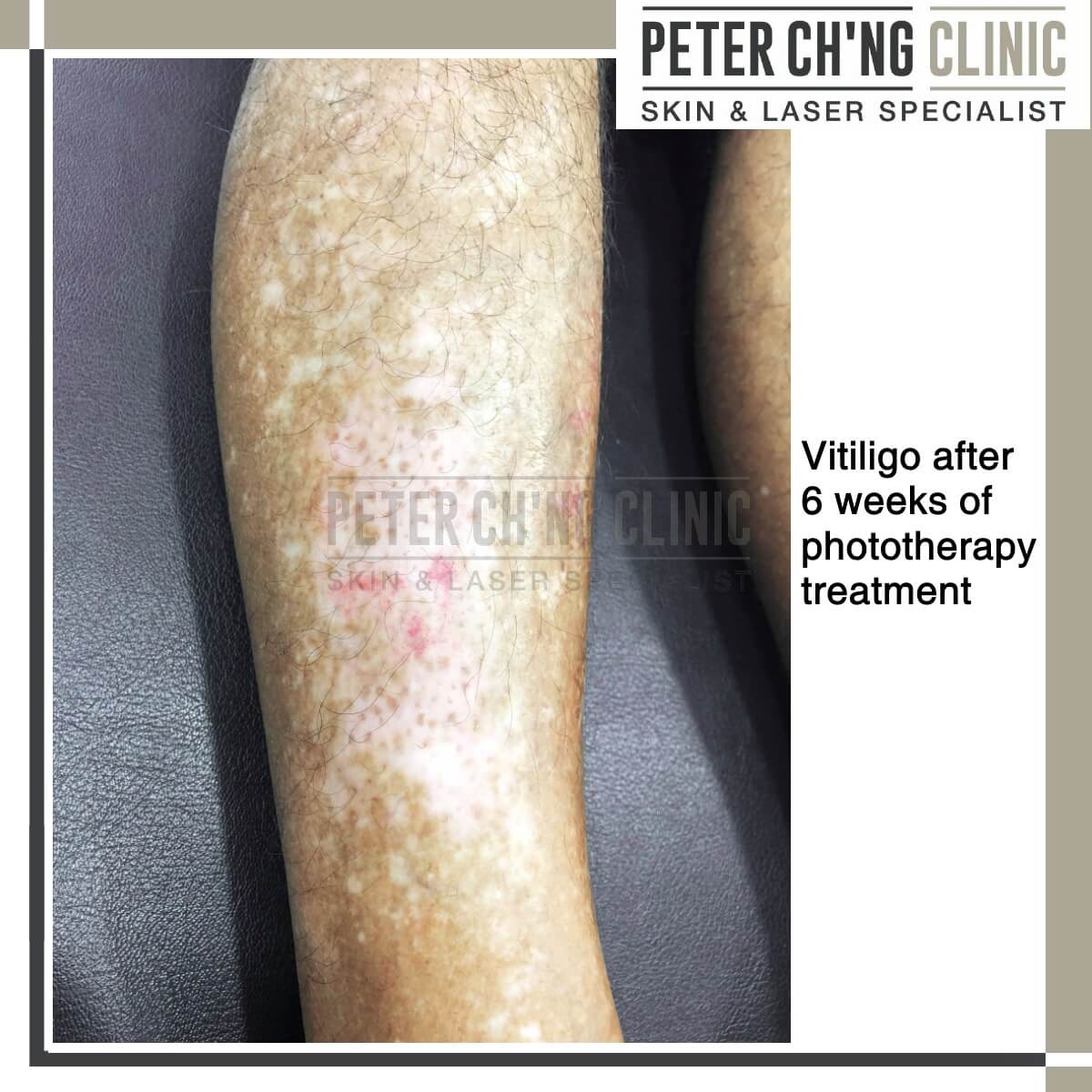
Vitiligo IS TREATABLE.
Even though treatments for vitiligo won't bring you immediate results, i.e. you won't see a re-pigmentation on your skin right after the treatment, medical treatments like phototherapy can help your skin recover its pigmentation slowly over the span of a few months.
Treatments also help to control the vitiligo from becoming larger and spreading to other skin areas. Delicate care for the treated area is also needed during the recovery period for the treatment to be effective.
But with time, the right treatment can help your skin recover its pigmentation and make the vitiligo disappear effectively.
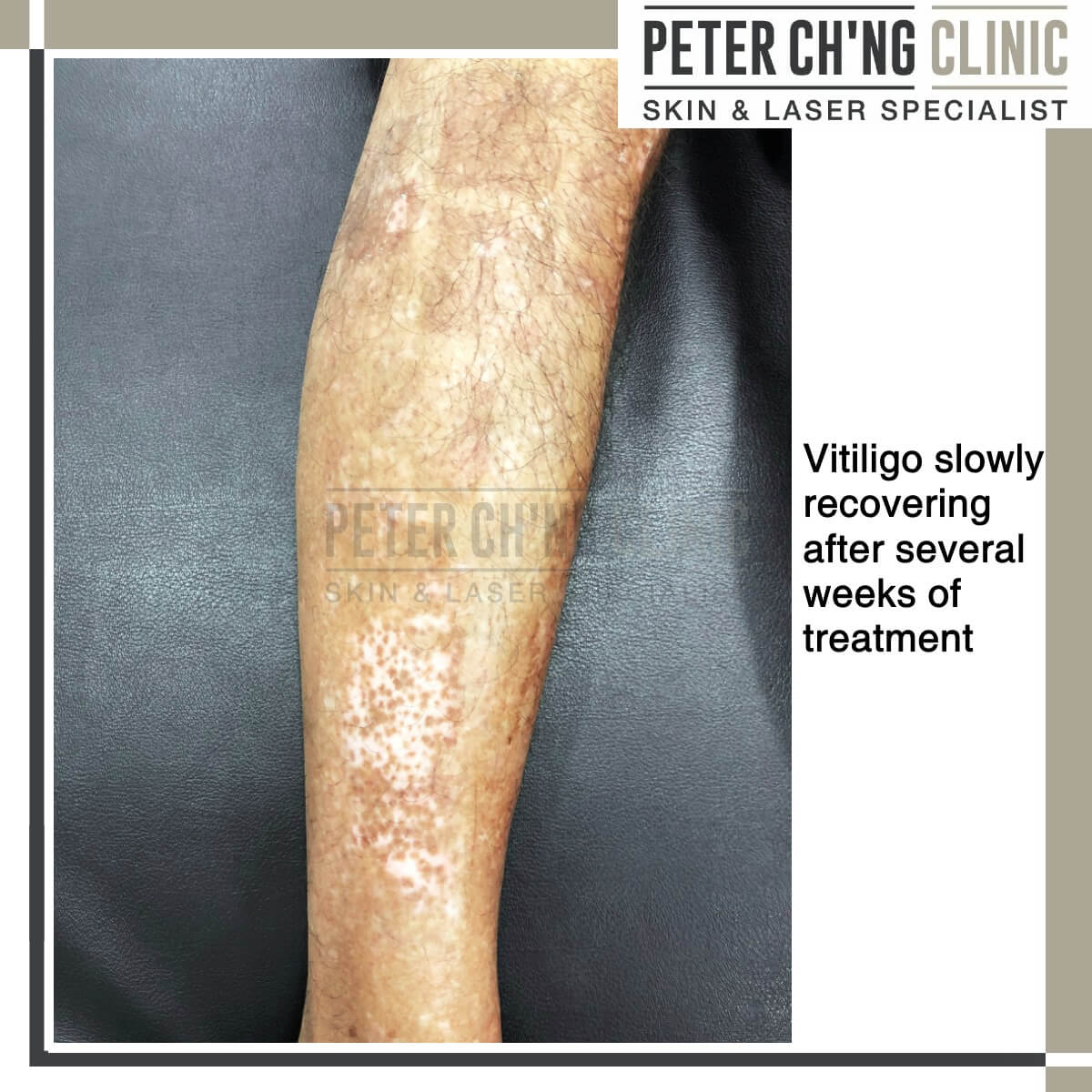
If you're interested in knowing more about how we can treat vitiligo, make sure you read Dr Peter's explanation here: Patient Mailbox: Tired of Covering Myself Up Because of Vitiligo
So hopefully we can start to dispel these myths and misconceptions about vitiligo, and focus on the most important issue at hand: treating vitiligo safely and effectively with the best medical treatments!
We’ll be going back to the Patient Mailbox series next week with Dr Loo, so stay tuned!
As an esteemed dermatologist and skin specialist, Dr Peter is a renowned doctor in treating various skin conditions. He also prides himself in being able to treat acne patients of all types, with a 100% acne treatment success record. If you’d like to ask more about your skin condition or have a discussion with Dr Peter, call us at +6011-22882299, WhatsApp us here, or book an appointment with Dr Peter here!

If you’d like to ask more about your skin condition or have a discussion with Dr Peter, you can contact us at +6011-22882299, Whatsapp us, or book an appointment with Dr Peter here!
READ MORE ARTICLES
Treatments mentioned in this article :
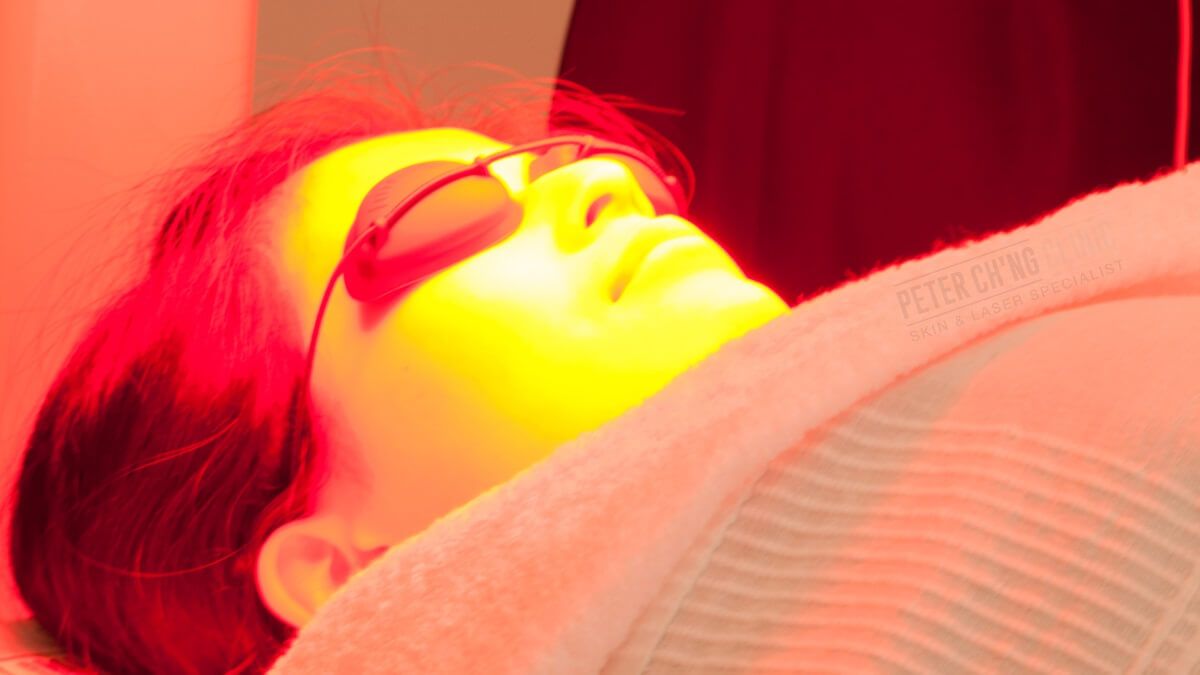
Phototherapy
Phototherapy is a skin treatment using light energy to penetrate the skin. Therefore, it causes minimal pain and discomfort throughout the treatment process.
